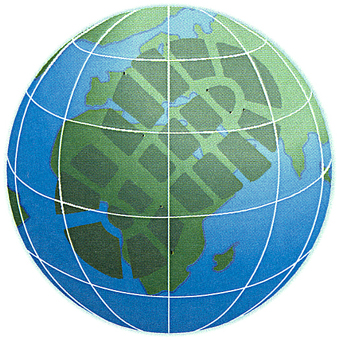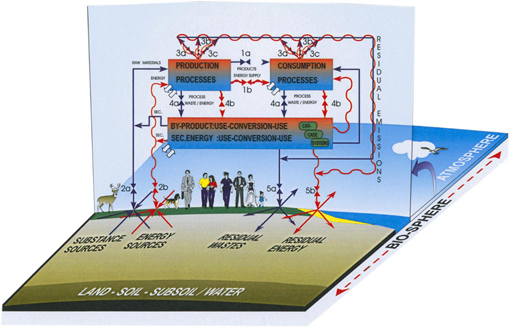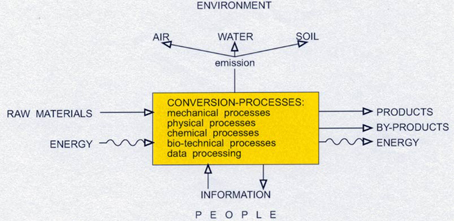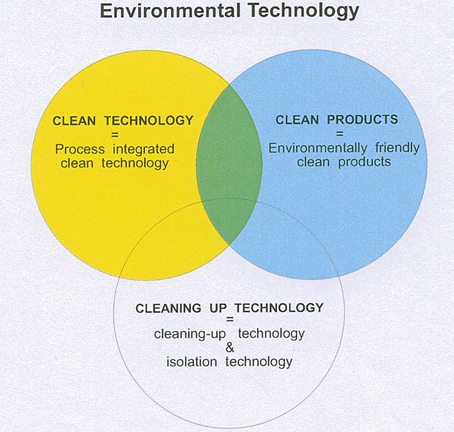The biggest challege of the 21st century is the development and implementation of methods that at the same time strengthen the economy and improve the environment, while making optimum use of the available space. In addition sustainability of production and consumption processes should be strived for in coastal zone areas. This is crucial in achieving a minimal global footprint. The environmental footprint can be regarded as a function of population size, lifestyles and technology.

The Environment, including Nature, has four important basic functions:
Carrier Function, providing space and habitat / substrate for all living organisms and other organic as well as inorganic matter, landscape & seascape, energy systems and all man and non-man induced processes.
Production Function, through exploration, exploitation, harvesting of inorganic & organic materials in the environmental compartments air-water-soil and by the use and conversion of all forms of energy.
Regulatory Function, maintaining essential eco-systems as well as other systems and processes, including the bio-geochemical cycle, the climate & hydrological cycle, the carbon & sulphur & nitrogen & phosphor cycle.
Information Function, providing information in many forms for many known and unknown purposes. Some of the known purposes are science; research & development; education; culture & history; recreation & experience; insight; inspiration.

Strengthening the economy and improving the environment are achieved through the application of the method of Building with Nature, the creation of new nature reserve areas, careful zoning of the various functions and the introduction of a Triple-C approach. With regard to this last approach it must be realised that in each coastal zone there are always existing and newly man-induced conversion processes in the field of industry, in power stations for energy-supply, in agriculture & aquaculture, in transport & distribution, in the services sector, as well as in the domestic sector.

In the direct future, those conversion processes should be developed and implemented, so that with fewer raw materials and with less energy, products at a higher yield are produced, with less hazardous emissions to air, water and soil, and with fewer waste products. The products should be relatively environment-friendly during their lifetime and thereafter. In case waste products are formed, they should be recycled or converted to environment-friendly products, or when this is not possible, be safely stored. Clean Technology (process-integrated clean technology), Clean Products (useful products that during their lifetime and thereafter are relatively environment-friendly) and Cleaning-up Technology, embodied in the Triple-C approach, are useful instruments to achieve - in due time - sustainable development.

Harmonious co-operation with all the relevant authorities at the various government levels and with non-governmental organizations and citizen groups is an essential prerequisite to achieve integrated multi-functional and sustainable coastal zone development.
